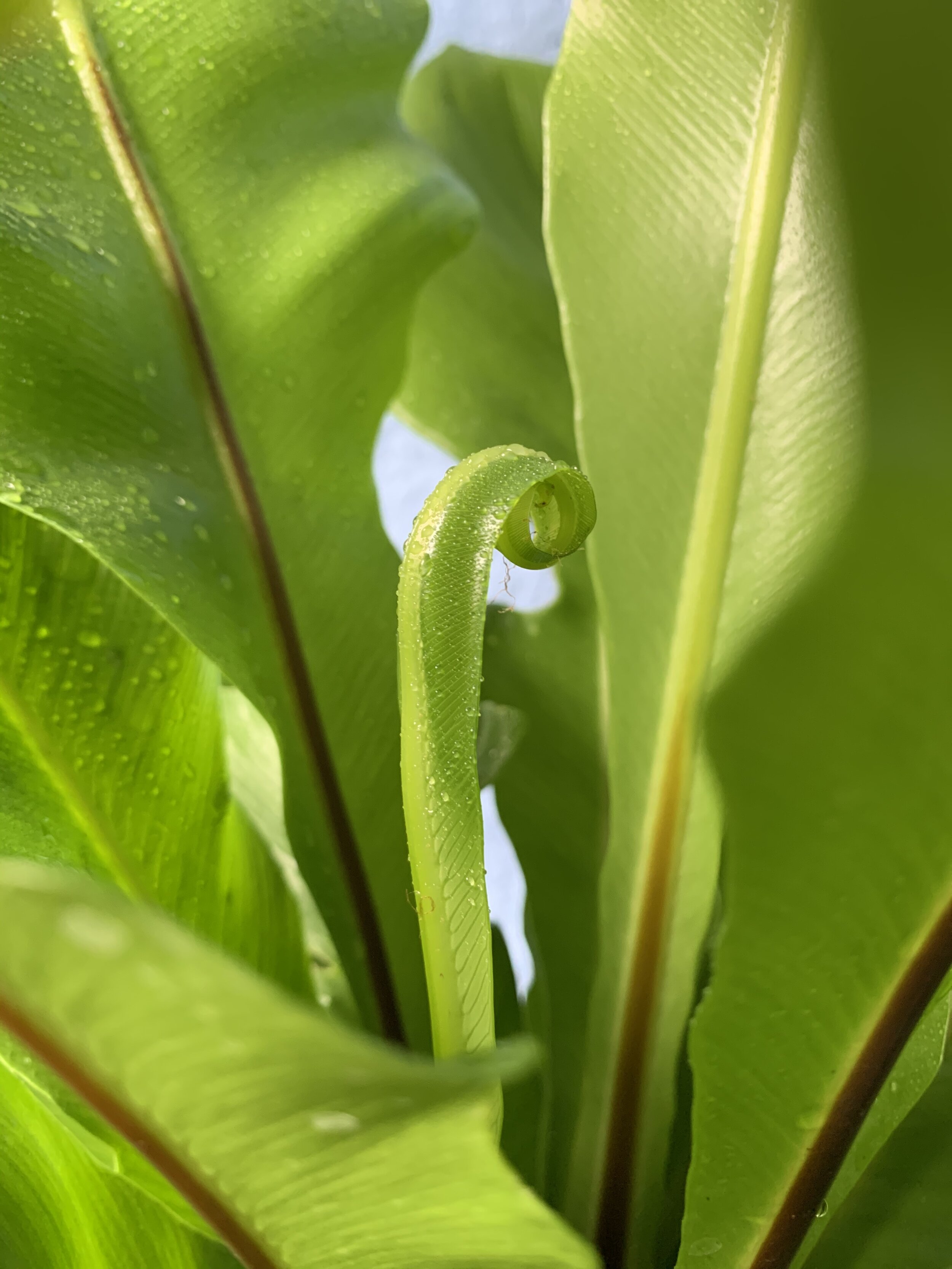 Image 1 of 5
Image 1 of 5

 Image 2 of 5
Image 2 of 5

 Image 3 of 5
Image 3 of 5

 Image 4 of 5
Image 4 of 5

 Image 5 of 5
Image 5 of 5






Bird's Nest Fern 6"
Part of the extensive Fern family, Asplenium Nidus, often referred to as Bird’s Nest Ferns, make vibrant, unique houseplants. Known for its wavy, waxy fronds resembling banana leaves, Bird’s Nest Ferns sporulate and grow from a fuzzy central rosette that resembles a bird’s nest, hence the nickname. This fern loves cool moisture, damp soil, and moderate indirect light. Bird’s Nest Ferns are ripply, sassy plants that add vibrant pops of green to any home or workspace.
Part of the extensive Fern family, Asplenium Nidus, often referred to as Bird’s Nest Ferns, make vibrant, unique houseplants. Known for its wavy, waxy fronds resembling banana leaves, Bird’s Nest Ferns sporulate and grow from a fuzzy central rosette that resembles a bird’s nest, hence the nickname. This fern loves cool moisture, damp soil, and moderate indirect light. Bird’s Nest Ferns are ripply, sassy plants that add vibrant pops of green to any home or workspace.
Part of the extensive Fern family, Asplenium Nidus, often referred to as Bird’s Nest Ferns, make vibrant, unique houseplants. Known for its wavy, waxy fronds resembling banana leaves, Bird’s Nest Ferns sporulate and grow from a fuzzy central rosette that resembles a bird’s nest, hence the nickname. This fern loves cool moisture, damp soil, and moderate indirect light. Bird’s Nest Ferns are ripply, sassy plants that add vibrant pops of green to any home or workspace.
Prospective Plant Parent: Bird’s Nest Ferns are great for those plant parents interested in giving their plant babies a little extra love and attention.
Difficulty: Intermediate. Ferns can be a bit finicky, however, learning how to take care of a Bird’s Nest Fern isn’t difficult, just specific.
Lighting: Bird’s Nest Ferns prefer medium to high indirect light. Be careful of direct light that can sunburn and scorch the fronds. If you want to be really accommodating, Bird’s Nest Ferns prefer North facing, indirect light.
Watering: Bird’s Nest Ferns like moist, but never soggy, soil. To avoid root rot, do not water the central rosette. Once established, these ferns enjoy a weekly watering schedule to keep their soil damp.
Humidity: Native to tropical east Africa, Bird’s Nest Ferns can survive in moderate humidity but will be happiest in high humidity from misting or a pebble tray.
Temperature: Bird’s Nest Ferns prefer indoor temperatures between 65-75 degrees, so if you are comfortable, it’s comfortable.